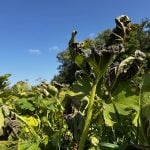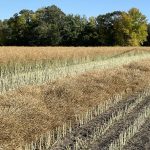Farm leaders call it a ticking time bomb.
Last year, Canadian farmers saw their collective debt soar more than $2.2 billion to a record $51 billion – a 4.5 percent increase over year earlier totals.
“I think the farm debt numbers really represent the scariest part of the income problem that we’re in right now,” said Rod Scarlett, executive director of Alberta’s Wild Rose Agricultural Producers.
“The amount of debt per farm is astronomical and the servicing charges are money right off the bottom line.”
Manitoba farm leader David Rolfe, president of Keystone Agricultural Producers, said it leaves farmers vulnerable to interest rate hikes. The Bank of Canada has raised interest rates 1.25 percent in recent months.
Read Also

Trade war may create Canadian economic opportunities
Canada’s current tariff woes could open chances for long-term economic growth and a stronger Canadian economy, consultant says — It’s happened before.
“I really think this is a ticking time bomb and we really haven’t been paying enough attention to it,” said the KAP president. “At a time when farm income is so low, this is a tremendous cost overhang.”
According to a Statistics Canada report last week on farm income and costs, 2005 debt servicing charges rose to $2.35 billion. Interest charges exceeded realized net farm income by $200 million across the country.
Canada’s farm debt on a per capita basis is more than double the American level and economists argue that Canada is at a competitive disadvantage because it means there is less revenue left for reinvestment.
Last year marked the 13th consecutive year that farm debt has increased.
The last year it declined was 1992. Since then, the size of the national farm debt has soared 118 percent.
“You have to see this in the light of low farmer income,” said Canadian Federation of Agriculture president Bob Friesen.
“The farm debt is a huge concern and while money borrowed for expansion or diversification can be good debt if it makes the operation more profitable, my guess is that a lot of this is debt restructuring, farmers borrowing against their equity to survive.”














